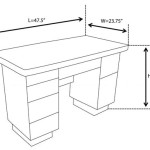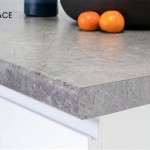The Pursuit of the Most Comfortable Lounge Chair
The lounge chair, a ubiquitous fixture in homes, offices, and public spaces, represents more than just a place to sit. It embodies relaxation, respite, and personal comfort. The selection of a lounge chair often involves a careful consideration of various factors, including ergonomics, materials, aesthetics, and intended use. The "most comfortable lounge chair" is a subjective concept, varying significantly depending on individual preferences and needs. However, some objective qualities contribute universally to enhanced comfort and overall user satisfaction. This article delves into these qualities, exploring design features, materials, and ergonomic considerations that contribute to the creation of a truly comfortable lounge chair.
The concept of comfort in a lounge chair is multifaceted. It extends beyond the immediate feeling of softness and incorporates factors that contribute to long-term physical well-being. A truly comfortable lounge chair supports the body in a way that minimizes strain, promotes good posture, and allows for extended periods of relaxation without discomfort. This requires a thoughtful integration of design principles and material choices that work in harmony to create an optimal seating experience.
Ergonomic Design and Support
One of the primary determinants of comfort in a lounge chair is its ergonomic design. Ergonomics, the science of designing equipment and environments to fit the human body, plays a crucial role in ensuring that a chair provides adequate support and minimizes the risk of discomfort or injury. A well-designed lounge chair will take into account the natural curves of the spine and provide lumbar support to maintain proper posture. This is particularly important for individuals who spend extended periods sitting, as poor posture can lead to back pain, neck pain, and other musculoskeletal issues.
The seat depth and angle are also critical ergonomic considerations. The seat depth should be sufficient to support the thighs without placing excessive pressure on the back of the knees. The seat angle should be slightly reclined to promote a relaxed posture, while still allowing the user to easily sit up and get out of the chair. Adjustable features, such as adjustable headrests and armrests, can further enhance comfort by allowing users to customize the chair to their individual needs and preferences.
Furthermore, the height of the lounge chair is important. A chair that is too low can make it difficult to stand up from, while a chair that is too high can cause the feet to dangle, putting pressure on the back of the thighs. Ideally, the chair should be at a height that allows the feet to rest comfortably on the floor, with the knees bent at a 90-degree angle. Some lounge chairs incorporate a slight tilt mechanism, facilitating gradual adjustment to the user’s preferred position and weight distribution. This feature promotes circulation and reduced pressure points, contributing significantly to overall comfort.
The integration of a footrest or ottoman can greatly enhance the comfort of a lounge chair as well. By elevating the legs, a footrest can help to reduce swelling and improve circulation. It also allows the user to fully recline, taking pressure off the spine and promoting relaxation. The optimal height and angle of the footrest will depend on individual preferences, but it should generally be at a height that allows the legs to be fully supported without placing undue strain on the knees or ankles.
Material Selection and Construction
The materials used in the construction of a lounge chair play a significant role in its comfort and durability. The choice of materials for the frame, cushioning, and upholstery will all impact the overall feel and longevity of the chair. The frame material will determine the chair's structural integrity and weight capacity, while the cushioning material will provide the primary source of comfort and support. The upholstery material will affect the chair's breathability, texture, and aesthetic appeal.
For the frame, hardwoods such as oak, maple, and walnut are popular choices due to their strength and durability. Metal frames, typically made of steel or aluminum, are also common, offering a more modern and lightweight alternative. Regardless of the frame material, it should be sturdy and well-constructed to ensure that the chair can withstand regular use without creaking, wobbling, or breaking.
The cushioning material is perhaps the most important factor in determining the comfort of a lounge chair. High-density foam is a widely used option known for its ability to provide firm support and maintain its shape over time. Memory foam conforms to the shape of the body, providing customized support and pressure relief. Down and feather fillings offer a plush and luxurious feel, but they require more maintenance and may not provide as much support as foam. The best cushioning material will depend on individual preferences, but it should generally be comfortable, supportive, and resistant to compression.
Upholstery materials vary greatly in terms of their texture, durability, and aesthetic appeal. Leather is a classic choice that is known for its durability, breathability, and luxurious feel. Fabric upholstery, such as cotton, linen, and velvet, offers a wider range of colors and textures, but it may not be as durable or easy to clean as leather. Synthetic fabrics, such as polyester and microfiber, are often used for their durability, stain resistance, and affordability. The choice of upholstery material will depend on the intended use of the chair, as well as individual preferences for style and maintenance.
The quality of the stitching and seams is also important. Properly sewn seams will prevent the upholstery from tearing or unraveling, ensuring that the chair maintains its appearance and integrity over time. High-quality zippers and fastenings are also essential. A well-constructed lounge chair will be built to last, with materials that are chosen for their durability and resistance to wear and tear.
Aesthetic Considerations and Personal Preferences
While ergonomics and materials are crucial for physical comfort, the aesthetic appeal of a lounge chair should not be overlooked. The chair's style, color, and design should complement the surrounding décor and reflect the user's personal taste. A visually appealing lounge chair can enhance the overall ambiance of a room and contribute to a sense of relaxation and well-being.
Lounge chairs are available in a wide variety of styles, from classic wingback chairs to modern minimalist designs. The choice of style will depend on the overall aesthetic of the room and the user's personal preferences. A classic wingback chair can add a touch of elegance and formality to a room, while a modern minimalist chair can create a more contemporary and relaxed atmosphere. Mid-century modern lounge chairs, with their clean lines, organic shapes, and natural materials, remain popular for their timeless appeal.
The color and pattern of the upholstery can also have a significant impact on the overall look and feel of a lounge chair. Neutral colors, such as beige, gray, and white, are versatile and can easily blend in with any décor. Bold colors and patterns can add a touch of personality and visual interest. The choice of color will depend on the desired mood and the existing color scheme of the room.
Ultimately, the most comfortable lounge chair is one that meets the individual's specific needs and preferences. Factors such as body size, posture, and personal taste will all influence the ideal choice. It is important to try out different chairs and consider all of the factors discussed in this article before making a purchase. Personal preferences play a vital role, as ergonomic and material superiority alone does not guarantee contentment if the aesthetic does not resonate with the user.
Proper care and maintenance are paramount to preserving the comfort and longevity of any lounge chair. Regular cleaning, appropriate for the specific upholstery material, will help prevent the accumulation of dust, dirt, and stains. Protecting the chair from direct sunlight and excessive moisture can also extend its lifespan. By investing in a high-quality lounge chair and taking care of it properly, users can enjoy years of comfortable relaxation and support.

20 Most Comfortable Chairs For Lounging In 2024

20 Best Cozy Chairs Of 2024 Most Comfortable Accent
What Is The Most Comfortable Reclining Lounge Chair Available Quora

10 The Most Comfortable Lounge Chairs In World Digsdigs

26 Most Comfortable Chairs Of 2024 Our Favorite Finds

Make A Decor Statement With These Comfortable Chairs

15 Most Comfortable Accent Chairs Tested And Reviewed For 2024

26 Most Comfortable Chairs Of 2024 Our Favorite Finds

The Most Comfortable Lounge Chairs For Apartments And Homes Oversized Chair Living Room Arm Chaise

20 Comfy Lounge Chairs 2024 Cozy For Every Budget








